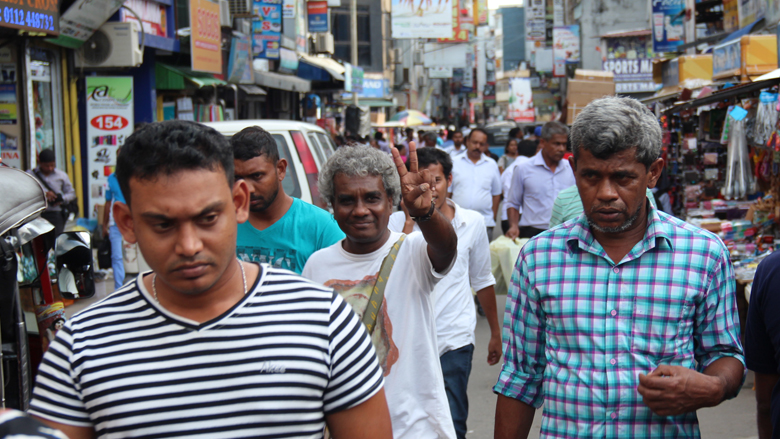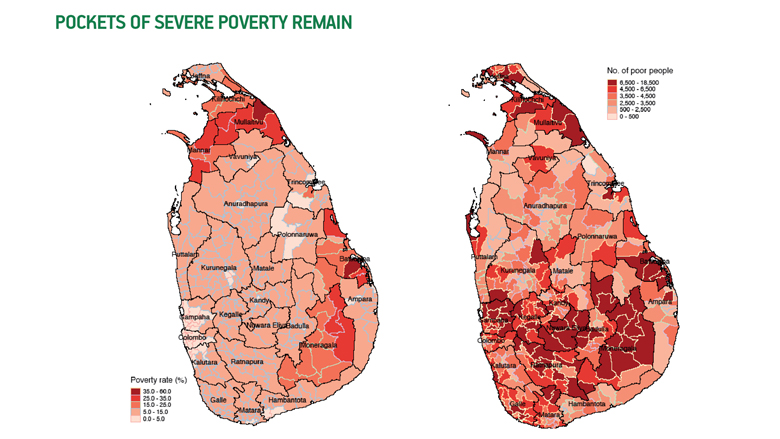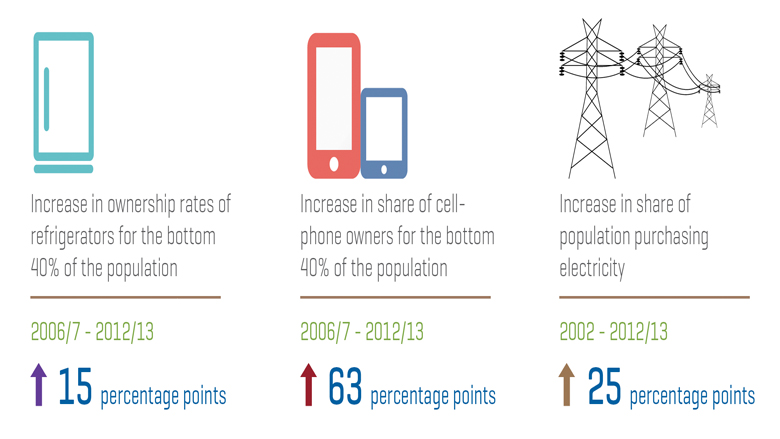When N. Eswari came back to Sri Lanka after decades of work in the Middle East, she knew she was ready to settle down. She invested her savings in setting up a grocery store. Her little business thrived and with a loan from a local women’s cooperative she was able to buy a fridge. She could now offer customers in her neighbourhood yoghurt and cold drinks, and was turning over some 20,000 Sri Lankan rupees a day – more than she had hoped for.
Her own parents had never been particularly well off, but Eswari is supporting not just herself and her daughter, but an extended family of six. At 51, she says she is ready to start planning for retirement.
Eswari is one of many Sri Lankans who have seen their lives improve since the end of a nearly 30-year long civil war. “We’ve seen major progress since 2002. In this new era, we wanted to see how the economy and welfare of Sri Lankan citizens was being affected and improved,” says David Newhouse, a senior economist with the World Bank and one of the authors of Sri Lanka Poverty and Welfare: Recent Progress and Remaining Challenges.
The report, which draws on data between 2002 and 2012, notes that trends in poverty have shifted, and better wages have transformed lives. Post-war domestic economic growth and fluctuations in global markets have reduced poverty and driven substantial changes in Sri Lanka’s economic environment.
Sri Lanka’s gradual transition out of agriculture, and the increase in urbanisation and agglomeration around the Colombo-Kandy-Galle corridor have brought workers greater access to more profitable opportunities. These parallel processes are a sustainable source of better livelihoods. However, challenges still remain. The question is, how can Sri Lanka build on its successes? What gaps need to be addressed? Below are some key findings.
Overall, Sri Lanka’s record of poverty reduction has been encouraging
“We find that increase in labour earnings and higher returns to work is what drove the poverty reduction,” says Newhouse. As demand for labour rose across a broad range of sectors, so did wages. The report highlights how sizeable increases in minimum agricultural wages led to higher earnings for agricultural workers. Excluding the Northern and Eastern provinces, the poverty headcount rate fell from about 22.7 percent in 2002 to 6.1 percent in 2012/13.
However, living standards remain low and pockets of severe poverty persist
“However, pockets of severe poverty remain,” cautions Newhouse. “What’s striking is that there are such regional disparities, even among areas that are geographically close to each other.”
The report identifies high levels of poverty in key districts in the north and east of the country, including Mullaitivu (28.8 percent), Mannar (20.1 percent) and Batticaloa district (19.4 percent). At 20.8 percent, the data from Monaragala district in Uva province also offers cause for concern. Within Batticaloa, estimated poverty rates run as high as 45 percent in Manmunai West and 38 percent in Karalai Pattu South.
Across the board, poverty rates are disproportionately high for vulnerable groups such as youth and ethnic minorities; and unemployment is high for youth and women.
The report highlights a contradiction in the Estate sector, which despite relatively low levels of monetary poverty, is severely disadvantaged in terms of alternative welfare indicators. These include access to education and healthcare, the quality of diet and the condition of housing. Such non-monetary indicators offer researchers and policymakers critical insights. “Non-monetary poverty can take longer than purely monetary poverty to eradicate, but in some ways it is easier to measure and so it provides a very important complimentary indicator on welfare,” says Newhouse.



